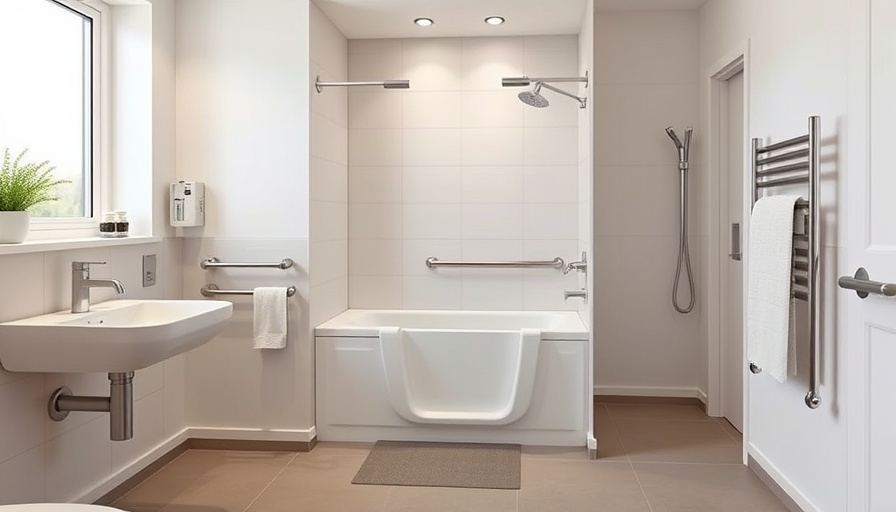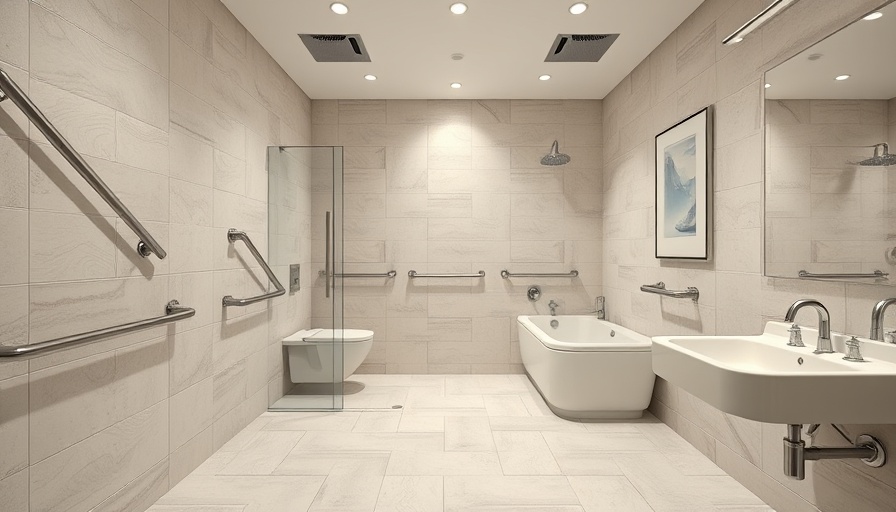
Recognizing the Risks: Why Bathroom Safety Matters
As our loved ones age, bathrooms can become treacherous arenas due to factors like slippery surfaces, limited mobility, and other challenges unique to seniors. An alarming statistic reveals that falls are the leading cause of injury in older adults, making it crucial to prioritize bathroom safety. Transforming bathrooms for seniors not only promotes independence but also fosters a sense of security for the entire family. Understanding the risks helps us appreciate the significance of adopting safety measures.
Key Safety Features for a Senior-Friendly Bathroom
Integrating essential safety features is vital in creating a secure bathroom. One primary feature is non-slip flooring, specifically designed to prevent accidents. Vinyl or textured tiles serve as excellent choices, ensuring stable surfaces even when wet. It’s also beneficial to use bath mats with non-slip backing to further mitigate risks.
The installation of grab bars is another lifesaver. Placing them near toilets and within showers or bathtubs adds much-needed support and stability, allowing seniors to navigate safely. Be sure to select aesthetically pleasing models to blend with the bathroom decor while ensuring robust anchoring for safety.
Optimizing Bathroom Layout for Accessibility
Considerations for bathroom layout modifications can drastically elevate accessibility. Widening doorways to a minimum of 32 inches ensures ease of movement for mobility aids. Lever-style door handles offer a user-friendly alternative to traditional knobs, further enhancing usability.
A walk-in shower is a transformation game-changer, eliminating the need to step over a bathtub edge, significantly reducing fall risks. Incorporating a shower seat allows seniors to bathe comfortably while seated, and features like hand-held showerheads and easily reachable controls can enhance the overall experience.
Additionally, reducing the height of sink vanities and opting for touch-controlled faucets can further aid seniors, making daily routines simpler and safer. Adjusting vanity heights to around 30 to 34 inches creates a suitable environment for those using mobility devices.
Illuminating the Way: The Importance of Bathroom Lighting
Lighting plays an often-overlooked role in bathroom safety. Poor visibility leads to an increased risk of accidents, especially for seniors who may have compromised vision. A blend of ambient, task, and accent lighting ensures all areas of the bathroom are well-lit. LED fixtures not only provide bright illumination but also promote energy efficiency.
Motion sensor lights add an excellent layer of safety, automatically activating when someone enters, thereby illuminating the space and reducing the risk of stumbling in the dark. Night lights can serve as guiding beacons while seniors navigate towards the bathroom during nocturnal hours.
Emotional and Human Interest Perspective: Why It Matters
Transforming bathrooms for seniors transcends just physical alterations; it’s about fostering independence and dignity. Simple adjustments make a profound difference in how seniors feel about their living spaces. By creating a safe haven, we not only safeguard their physical health but also enhance their mental well-being, allowing them to maintain autonomy and confidence in daily tasks.
Practical Tips for Implementation
Treasure your loved ones by focusing on safety improvements that will ease their daily routines. Start small; evaluate current bathroom features and identify potential hazards. Enhance safety within your budget and prioritize essential modifications such as grab bars or non-slip mats before embarking on larger renovations. Engaging professionals with experience in aging-in-place designs can yield insightful guidance tailored to your specific needs.
Call to Action: Prioritize Bathroom Transformations Today
Don’t wait until an accident occurs to enhance your senior loved one’s bathroom safety. By prioritizing these essential modifications, you can create an environment that fosters both security and independence. Begin your transformation journey today and offer peace of mind for your family.
 Add Row
Add Row  Add
Add 




 Add Row
Add Row  Add
Add 

Write A Comment